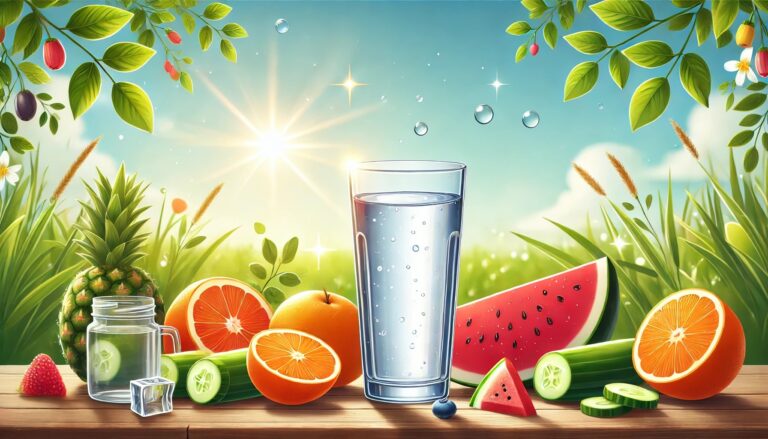In recent years, quinoa has gained significant attention as a “superfood,” thanks to its high protein content and nutrient-rich profile. It has become an ideal alternative to traditional grains like rice and wheat, offering a variety of health benefits. This article delves into the nutritional value of quinoa, its health advantages, comparisons with traditional grains, and how to incorporate it into your daily diet.
What is Quinoa?
Quinoa is a seed originating from South America. While often referred to as a “grain,” it actually belongs to the amaranth family, closely related to spinach and beets. Quinoa comes in various colors, including white, red, and black, and is versatile in cooking.
What Makes Quinoa Unique?
1. Complete Protein: Quinoa contains all nine essential amino acids, making it a rare complete protein source in the plant world.
2. Gluten-Free: It’s an excellent choice for individuals with gluten intolerance or celiac disease.
3. Rich in Micronutrients: Quinoa is packed with magnesium, iron, zinc, and B vitamins, providing a wide range of health benefits.
Nutritional Value of Quinoa
Quinoa is low in calories and high in fiber and protein. Here’s the nutritional profile per 100 grams of cooked quinoa:
• Calories: 120 kcal
• Protein: 4.1 g
• Carbohydrates: 21.3 g
• Dietary Fiber: 2.8 g
• Fat: 1.9 g
• Magnesium: 64 mg
• Iron: 1.5 mg
Compared to other grains, quinoa offers superior nutritional benefits.
Health Benefits of Quinoa
1. A High-Quality Protein Source
Quinoa is a rich protein source, making it an ideal choice for vegetarians and vegans. With 4.1 grams of protein per 100 grams, it provides both quantity and quality.
2. Supports Digestive Health
The dietary fiber in quinoa aids digestion, prevents constipation, and helps stabilize blood sugar levels.
3. Boosts Energy
Rich in magnesium and iron, quinoa helps relax muscles, reduce fatigue, and improve oxygen transport in the blood, enhancing energy levels.
4. Reduces Inflammation
Quinoa’s antioxidants help neutralize free radicals, reducing the risk of chronic inflammation and associated diseases.
5. Aids in Weight Management
Quinoa’s low-calorie, high-fiber composition promotes a feeling of fullness, making it an excellent choice for those aiming to lose or maintain weight.
6. Improves Heart Health
Healthy fats and antioxidants in quinoa can help lower cholesterol levels and support cardiovascular health.
Quinoa vs. Traditional Grains
Quinoa vs. Rice
• Protein: Quinoa contains twice as much protein as rice.
• Fiber: Quinoa is significantly higher in dietary fiber than rice.
• Glycemic Index: Quinoa has a lower glycemic index, making it better for diabetics.
Quinoa vs. Wheat
• Gluten-Free: Quinoa is a gluten-free alternative, while wheat contains gluten.
• Micronutrients: Quinoa is richer in magnesium and iron compared to wheat.
Quinoa vs. Oats
• Versatility: Quinoa is more versatile, suitable for savory and sweet dishes, whereas oats are primarily used in breakfast dishes.
• Amino Acids: Quinoa provides a more complete amino acid profile.
How to Incorporate Quinoa into Your Diet
1. Quinoa Salad
Mix cooked quinoa with chopped cucumbers, cherry tomatoes, olives, and herbs. Drizzle with lemon juice and olive oil for a refreshing and healthy salad.
2. Rice Substitute
Use quinoa as a substitute for white rice in your meals, pairing it with stir-fried vegetables, stews, or curries.
3. Quinoa Breakfast Bowl
Combine quinoa with oatmeal, then add honey, nuts, and fruits for a nutritious breakfast option.
4. Quinoa Energy Bars
Mix quinoa, nuts, seeds, and honey, then bake into energy bars. These make for a healthy snack, perfect for busy individuals or fitness enthusiasts.
5. Quinoa Soup
Add quinoa to vegetable or chicken soup to increase protein and fiber content.
Tips for Cooking and Eating Quinoa
1. Rinse Thoroughly: Quinoa has a natural coating called saponin, which can cause a bitter taste if not rinsed properly.
2. Moderation is Key: While quinoa is healthy, it’s best to consume it in moderate amounts to avoid excessive calorie intake.
3. Balance Your Diet: Although quinoa is nutrient-rich, it’s essential to pair it with other foods for a well-rounded diet.
Global Trends of Quinoa
As a “superfood,” quinoa is not just a favorite among health-conscious individuals but has also become a star ingredient in various food industries. In 2024, quinoa will continue to shine in:
• Plant-Based Diets: Its high protein and gluten-free nature make it a staple in plant-based eating.
• Fitness and Weight Loss: Its low-calorie and high-fiber properties make it a go-to for fitness enthusiasts.
• Sustainable Agriculture: Quinoa thrives in arid, nutrient-poor soil, making it a crucial crop for sustainable farming.
Conclusion
Quinoa’s high protein content, gluten-free nature, and versatility make it an excellent alternative to traditional grains. Whether as a rice substitute, in salads, or as a breakfast option, quinoa adds both nutrition and flavor to your meals.
Incorporating quinoa into your daily diet can boost your overall health and help you maintain a balanced lifestyle. Choose quinoa and bring the benefits of this “super grain” to your table!




















